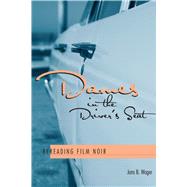Dames in the Driver's Seat
, by Wager, Jans B.- ISBN: 9780292709669 | 0292709668
- Cover: Paperback
- Copyright: 9/30/2005
With its focus on dangerous, determined femmes fatales, hardboiled detectives, and crimes that almost-but-never-quite succeed, film noir has long been popular with moviegoers and film critics alike. Film noir was a staple of classical Hollywood filmmaking during the years 1941-1958 and has enjoyed a resurgence in popularity since the 1990s.Dames in the Driver's Seatoffers new views of both classical-era and contemporary noirs through the lenses of gender, class, and race. Jans Wager analyzes how changes in film noir's representation of women's and men's roles, class status, and racial identities mirror changes in a culture that is now often referred to as postmodern and post-feminist. Following introductory chapters that establish the theoretical basis of her arguments, Wager engages in close readings of the classic noirsThe Killers, Out of the Past, and Kiss Me Deadlyand the contemporary noirsL. A. Confidential, Mulholland Falls, Fight Club, Twilight, Fargo, andJackie Brown. Wager divides recent films into retro-noirs (made in the present, but set in the 1940s and 1950s) and neo-noirs (made and set in the present but referring to classic noir narratively or stylistically). Going beyond previous studies of noir, her perceptive readings of these films reveal that retro-noirs fulfil a reactionary social function, looking back nostalgically to outdated gender roles and racial relations, while neo-noirs often offer more revisionary representations of women, though not necessarily of people of colour.







